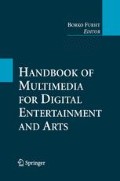Abstract
The process behind the act of the art creation or the creation process has been the subject of much debate and research during the last fifty years at least, even thinking art and beauty has been a subject of analysis already by the ancient Greeks such were Plato or Aristotle. Even though intuitively it is a simple phenomenon, creativity or the human ability to generate innovation (new ideas, concepts, etc.) is in fact quite complex. It has been studied from the perspectives of behavioral and social psychology, cognitive science, artificial intelligence, philosophy, history, design research, digital art, and computational aesthetics, among others. In spite of many years of discussion and research there is no single, authoritative perspective or definition of creativity, i.e., there is no standardized measurement technique. Regarding the development process that supports the intellectual act of creation it is usually described as a procedure where the artist experiments the medium, explores it with one or more techniques, changing shapes, forms, appearances, where beyond time and space, he/she seeks his/her way out to a clearing, i.e., envisages a path from intention to realization. Duchamp in his lecture “The Creative Act” states the artist is never alone with his/her artwork; there is always the spectator that later on will react critically to the work of art. If the artist succeeds in transmitting his/her intentions in terms of a message, emotion or feeling to the spectator then a form of aesthetic osmosis actually takes place through the inert matter (the medium) that enabled this communication or interaction phenomenon to occur. The role of the spectator may become gradually more active by interacting with the artwork itself possibly changing or becoming a part of it [2][4].
Access this chapter
Tax calculation will be finalised at checkout
Purchases are for personal use only
References
Beveridge, W.E.B. (1957). The Art of Scientific Investigation, (New York; Vintage Books).
Duchamp, M. (1959). The Creative Act. Lecture at the Museum of Modern Art, New York, October 19, 1961. Published in Art and Artists, 1, 4 (July 1966).
Eco, U. (1962). The Open Work. Harvard University Press, (1989).
Eliot, T.S. (1920). Tradition and Individual Talent in The sacred wood; essays on poetry and criticism. London: Methune, [1920]. ISBN:1-58734-011-9.
Grau, O. (2003). Virtual Art – From Illusion to Immersion. Cambridge, Massachusetts: The MIT Press.
Greene R. (2005). Internet Art. London: Thames & Hudson Ltd.
Laurel, B. (ed), (2003). Design Research: Methods and Perspectives. The MIT Press.
Löwgren, J., & Stolterman, E. (2007). Thoughtful interaction design – a design perspective on information technology. Cambridge, Massachusetts: The MIT Press.
Marcos, A. (2007). Digital Art: When artistic and cultural muse and computer technology merge. IEEE Computer Graphics and Applications, 5(27), 98–103.
Marcos, A., Branco, P., Carvalho, J. (2009). The computer medium in digital art’s creative development process. In James Braman & Giovanni Vincenti (Eds.), Handbook of Research on Computational Arts and Creative Informatics: IGI Publishing.
Paul, Ch. (2005). Digital Art. London: Thames & Hudson Ltd.
Routio, P. (2007). Arteology, the Science of artifacts. University of Arts and Design Helsinki (UIAH). Printed from the Internet at: http://www2.uiah.fi /projects/metodi/108.htm(visited at 01.02.2009)
Wilson, S. (2002). Information Arts: Intersections of Art, Science, and Technology. Cambridge, Massachusetts: The MIT Press.
Author information
Authors and Affiliations
Corresponding author
Editor information
Editors and Affiliations
Rights and permissions
Copyright information
© 2009 Springer Science+Business Media, LLC
About this chapter
Cite this chapter
Marcos, A.F., Branco, P.S., Zagalo, N.T. (2009). The Creation Process in Digital Art. In: Furht, B. (eds) Handbook of Multimedia for Digital Entertainment and Arts. Springer, Boston, MA. https://doi.org/10.1007/978-0-387-89024-1_27
Download citation
DOI: https://doi.org/10.1007/978-0-387-89024-1_27
Published:
Publisher Name: Springer, Boston, MA
Print ISBN: 978-0-387-89023-4
Online ISBN: 978-0-387-89024-1
eBook Packages: Computer ScienceComputer Science (R0)

